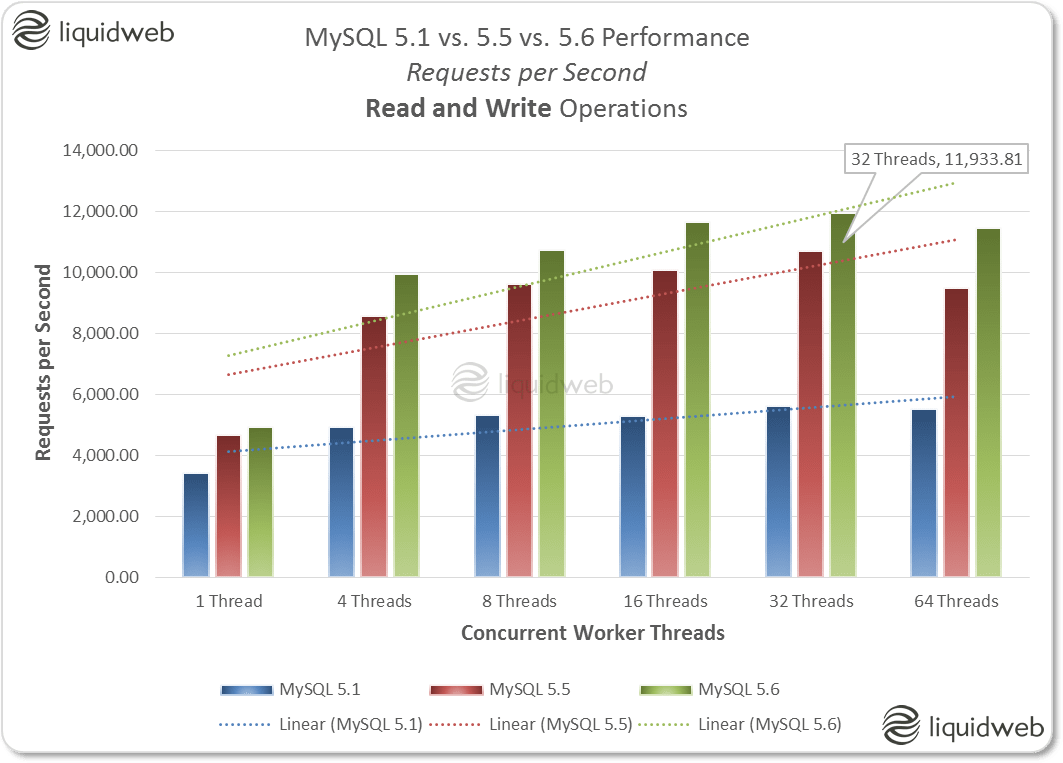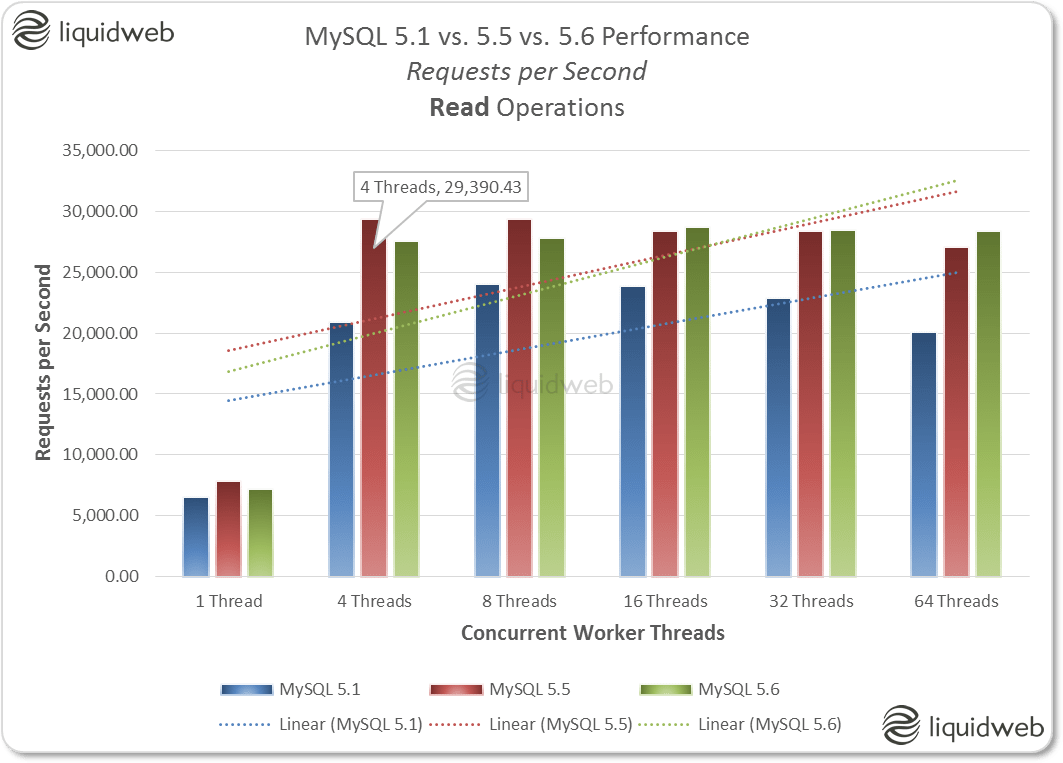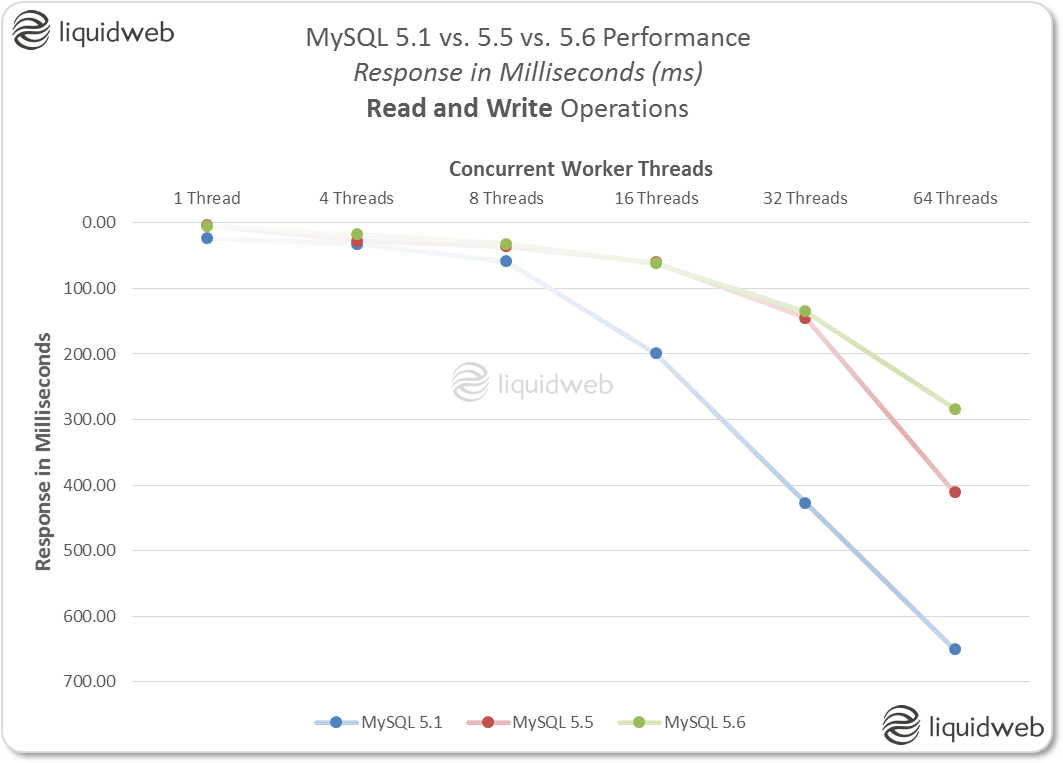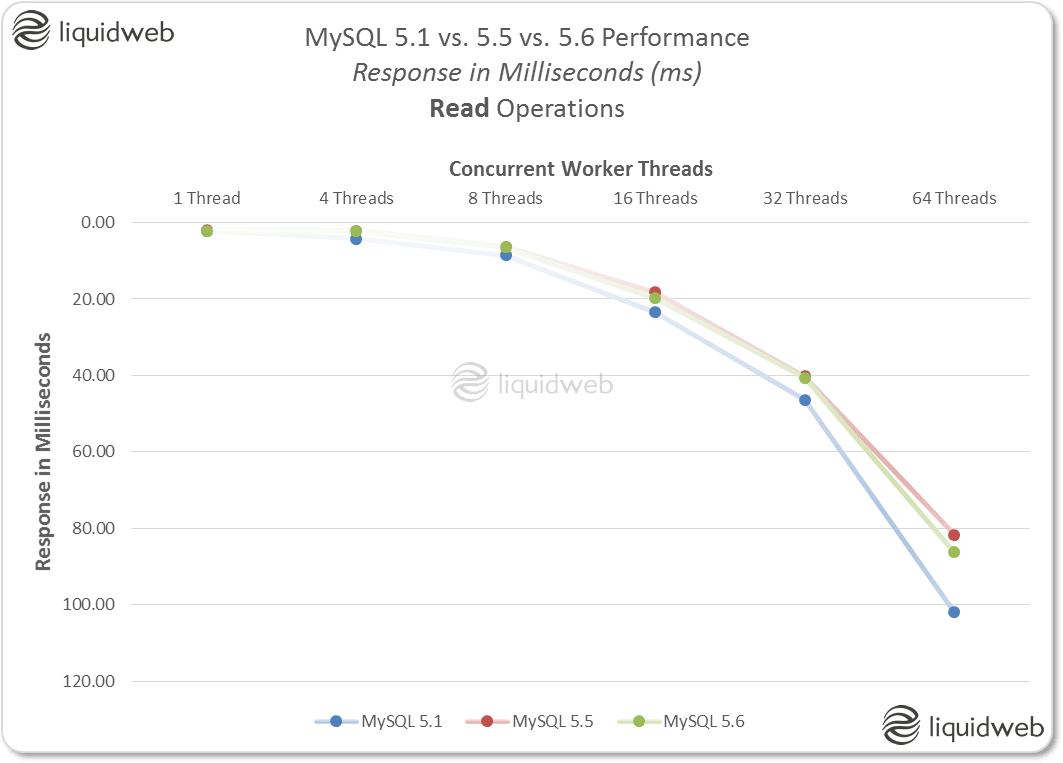MySQL 5.1 vs. 5.5 vs. 5.6 Performance Comparison
Posted on by J. Mays
Reading Time: 2 minutes
General Results
- MySQL 5.5 and 5.6 both performed significantly better than MySQL 5.1.
- Read/Write and Read Only workloads testing requests per second show a marked improvement for both MySQL 5.5 and 5.6 over MySQL 5.1.
- The 95th percentile response times (explained below) for both Read/Write and Read Only workloads on MySQL 5.5 and 5.6 were much lower (thus faster) than MySQL 5.1.
Requests per Second


Response in Milliseconds


Testing Methodologies
Hardware Used
- Intel E3-1220 v2
- 8 GB of RAM
- 2 x Crucial M500 240 GB Drives
- RAID 1, using an LSI 9260-4I RAID Card
Constants
- Physical Server Hardware
- OS: CentOS 6.5
- Storm Dedicated
- “Warm Up” Test Before Recording Results
Test Descriptions
- All testing was done with Sysbench.
- MySQL and Sysbench were running on the same host, meaning that both were communicating via Localhost.
- “Warm-up” tests were conducted before recording results.
- Requests per Second: The total number of requests the MySQL server was able to respond to per second.
- 95th Percentile: The number, in milliseconds (ms), below which 95% of the response times fell.
- Read/Write Workloads: MySQL performs Selects, Deletes, Updates, and Inserts.
- Read Only Workloads: MySQL performs Selects only.
Related Articles:

About the Author: J. Mays
As a previous contributor, JMays shares his insight with our Knowledge Base center. In our Knowledge Base, you'll be able to find how-to articles on Ubuntu, CentOS, Fedora and much more!
Categories
Have Some Questions?
Our Sales and Support teams are available 24 hours by phone or e-mail to assist.
1.800.580.4985
1.517.322.0434
Latest Articles
How to install PyTorch on Linux (AlmaLinux)
Read ArticleInnovative armor — exploring ThreatDown’s impact on cyber defense
Read ArticleControlling PHP settings with a custom php.ini file
Read ArticleLinux dos2unix command syntax — removing hidden Windows characters from files
Read ArticleChange cPanel password from WebHost Manager (WHM)
Read ArticleWant More Great Content Sent to Your Inbox?



